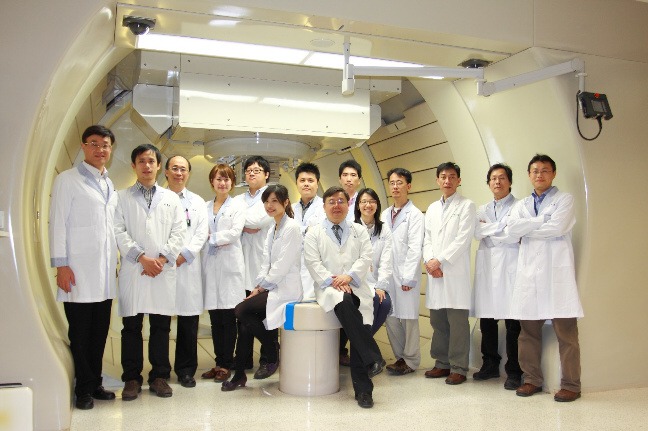
The Physicist Group
Medical physicists play a very important role in radiotherapy procedures.
Medical physicists mainly assist radiation oncologists in providing radiotherapy
and are responsible for establishing and carrying out all routine standard
operating procedures for quality assurance of all radiotherapy equipment in
order to ensure that patients receive the best quality of radiotherapy. The
medical physicist group is a team with professional knowledge and proficiency
in radiation physics and radiotherapy. All therapeutic equipment and
techniques introduced into the division have been comprehensively evaluated
and assessed by medical physicists before being used in clinical treatment.
Such techniques have included the first instance of stereotactic intracranial
radiotherapy (SRS) introduced in 1993, intensity modulated radiation therapy
(IMRT) in 2000, Novalis Radiosurgery in 2006, and RapidArc radiotherapy in
2009; the medical physicist group also received and tested proton therapy
equipment in 2014. The medical physicists not only conduct regular clinical
work, but are also responsible for seminars and trainings for physicians of the
division and radiation therapist interns. The division adapted the medical
physicist training system used in the United States when it was established.
All the chiefs of the division truly value the group and have sent staff to
renowned international hospitals for training or to attend processional
conferences. A number of medical physicists received training in the clinical
application of proton physics at various renowned proton therapy centers in
Japan and the United States, who, afterwards, became the key players in
advancing proton therapy in clinical application in Chang Gung Memorial
Hospital. With further technological advances in the future, more sophisticated and diverse radiotherapy equipment and techniques will be developed.
Therefore, medical physicists will face an increasing number of challenges.
They must constantly absorb new knowledge and stay uptodate on new
clinical developments to maintain a worldclass quality of the radiotherapy
techniques of the division, as well as to provide highquality radiotherapy for
local cancer patients.